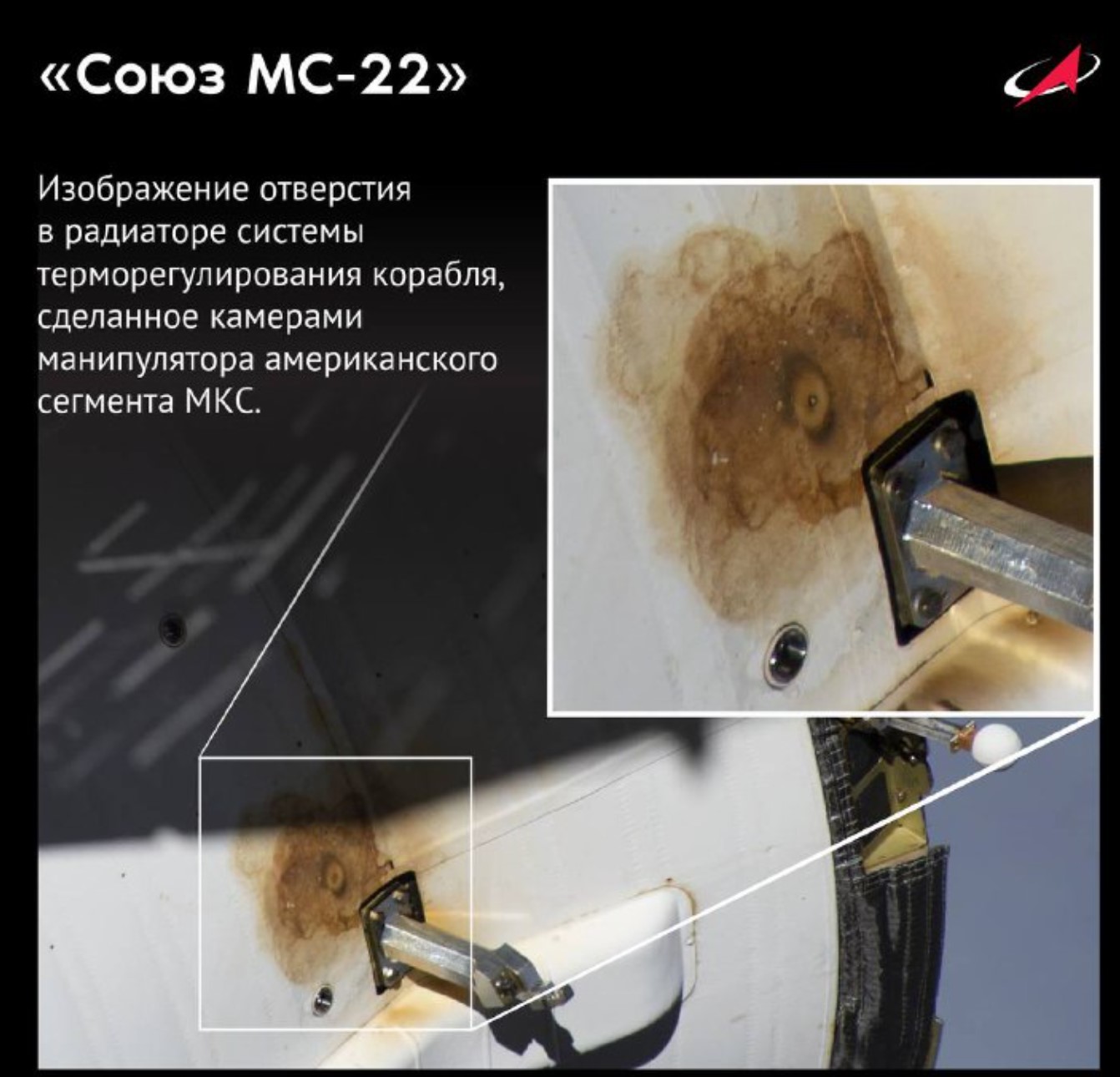Russia releases 1st images of damage to leaky Soyuz spacecraft (photos)
Russian state media has previously claimed the leak might be due to a meteoroid impact.
Russia's space agency released the first public images of the source of a radiator leak aboard a Soyuz spacecraft docked at the International Space Station.
The images were shared on Monday (Feb. 13) in a post on the agency's official Telegram account. According to the post, the pictures show evidence of external damage, and Russia's space agency Roscosmos has previously stated that the leak, which occurred on Dec. 14, was caused by a meteoroid impact. "An image of the hole in the radiator of the ship's thermoregulation system, captured with the camera on the manipulator on the American segment of the ISS," the caption on the image states.
The Telegram post adds that Roscosmos is currently investigating the leak, and has postponed the launch of a replacement Soyuz spacecraft, MS-23, until March 2023 until a cause for the mishap has been found. The images come just two days after a coolant leak was detected aboard another Russian craft docked at the ISS, this time the Progress 82 robotic cargo capsule.
Related: Russia to launch new Soyuz capsule to replace leaky spacecraft on space station
NASA program managers have been quick to note that the leaky Soyuz MS-22 — which brought NASA astronaut Frank Rubio and cosmonauts Sergey Prokopyev and Dmitry Petelin to the International Space Station (ISS) last September — poses no danger to the orbiting lab or its crewmembers. Still, the situation has caused some scrambling by the ISS partners.
MS-22 has been deemed unsafe to fly astronauts back to Earth except in the event of an emergency aboard the station. If an evacuation is needed before MS-23 arrives, Prokopyev and Petelin will go home in the MS-22. But Rubio will fly down in a SpaceX Dragon capsule, cramming in with four other astronauts. (Having a third person inside the coolant-less Soyuz during the fiery ride through Earth's atmosphere is viewed as a risky proposition.)
The Soyuz MS-23 that will replace the leaky MS-22 was initially projected to launch in February from Baikonur Cosmodrome in Kazakhstan. That slight delay probably won't significantly affect the missions of Rubio, Prokopyev and Petelin, who were already slated to stay aboard the ISS twice as long as originally planned.
Breaking space news, the latest updates on rocket launches, skywatching events and more!
"The plan is for Frank and Dimitri and Sergey to stay on board for several more months until they come home, probably [in] late September," Dina Contella, NASA's ISS operations integration manager, said during a press conference on Jan. 17.
In response to the purported meteoroid strike that damaged Soyuz MS-22, NASA has begun discussions with SpaceX to add more shielding to the company's Crew Dragon capsules. The next SpaceX crew mission to the ISS, Crew-6, is scheduled to launch on Feb. 26.
Follow Brett on Twitter at @bretttingley. Follow us @Spacedotcom, or on Facebook and Instagram.

Brett is curious about emerging aerospace technologies, alternative launch concepts, military space developments and uncrewed aircraft systems. Brett's work has appeared on Scientific American, The War Zone, Popular Science, the History Channel, Science Discovery and more. Brett has degrees from Clemson University and the University of North Carolina at Charlotte. In his free time, Brett enjoys skywatching throughout the dark skies of the Appalachian mountains.

